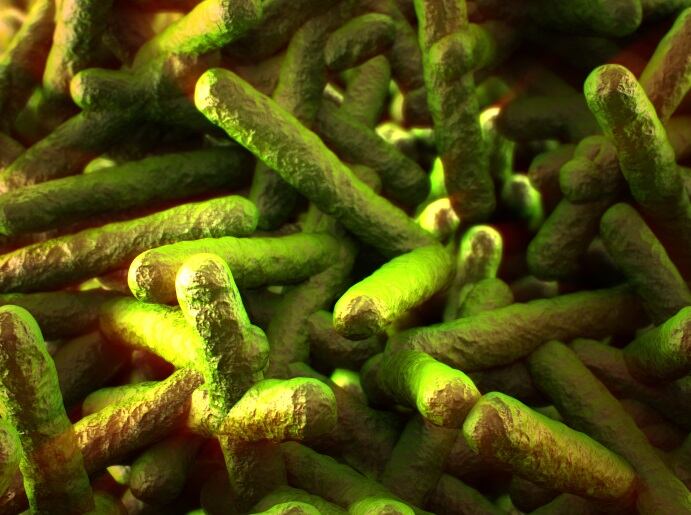It said the agency’s recommendations appear to assume all facilities can apply the same principles of sanitary design, sanitation controls and environmental monitoring.
The group made the comments on the US Food and Drug Administration’s (FDA) guidance on the control of Listeria monocytogenes (Lm) in ready-to-eat (RTE) foods.
FDA released draft guidance in January to provide current thinking and encourage companies to use environmental testing procedures to ensure safe products. Comments closed at the end of July.
One recommendation is to collect samples from at least five food contact surface (FCS) sites and five non-FCS sites on each production line.
Eradication not realistic but control is
ALP said change cannot happen overnight and given prevalence in the environment, complete eradication of Lm from processing plants is not realistic; but control of the pathogen is.
ALP Members
American Bakers Association, American Frozen Food Institute, Chilled Foods Association, Food Marketing Institute, Grocery Manufacturers Association, International Dairy Food Association, Juice Products Association, Midwest Food Products Association, National Confectioners Association, National Fisheries Institute, National Milk Producers Federation, National Pasta Association, North American Meat Institute, Northwest Food Processors Association, Northwest Horticultural Council, Produce Marketing Association, Seafood Products Association and United Fresh Produce Association
“FDA should recognize that food facilities have different capabilities, resources, and expertise, and it would require many small and medium-sized companies, to invest significant time and resources to implement effective Lm control measures that reflect the agency’s recommendations.”
ALP said recommendations for supply chain controls, facility zoning and raw material and finished product testing do not provide sufficient flexibility for different approaches.
“Specifying the time and frequency of repeat sampling and testing plans does not offer the flexibility needed across different production cycles, shift schedules, clean breaks, raw material needs and seasonal production considerations.”
The draft guidance revises the 2008 version.
ALP said it has removed the regulatory action limit of 100 CFU/g of Lm in RTE foods that do not support growth of the pathogen and formalizes the recent enforcement approach of a zero-tolerance regulatory action level but does not provide the scientific basis for the decision.
PepsiCo: Zone 1 testing ‘unduly costly and burdensome’
PepsiCo said the guidance should be revised to clarify that foods not supporting growth of Lm due to characteristics (i.e. low water activity) do not need to follow it or may consider elements under their food safety plan hazard analysis.
The firm said controlling zones 2 and 3 is the best way to monitor and manage potential pathogen presence in the environment and emphasis on zone 1 testing is unduly costly and burdensome.
“We have already experienced investigators coming into our facilities and informing the plant that they “expect to see a Zone 1 testing program” upon their next visit.
“This is an inappropriate use of draft guidance, as the decisions around a Pathogen Environmental Monitoring program should be based on a multitude of factors, including the product profile, the production and process line, and the nature of the facility.”
PepsiCo estimated the cost of recommended zone 1 testing for foods that do not support growth would be an additional $1m per year in testing costs alone.
It also estimated the cost of holding product while waiting for sampling results, including warehousing and transportation expenses, would be over $300m per year.

Kellogg said it considers whether the processing line is new, if there is construction in the facility, history of results on the line, if there is new or replaced equipment, if major maintenance is occurring, or whether there has been a major upset to the environment, when determining whether food contact surfaces should be sampled and frequency of such sampling and testing.
The firm uses a “staged” approach to environmental monitoring. Stage 1 is the highest frequency of Zone 1 testing for Listeria spp. and Stage 3 is the lowest.
“In Stage 1, Zone 1 testing is performed daily, for a minimum of three production runs. Samples are collected at 0 (before start-up) and four hours into the production run and then every 24 hours. In addition, Zone 2-4 testing is performed twice a week.”
Kellogg said it agreed with recommendations that environmental monitoring programs should take a “seek and destroy” approach to controlling Lm and that manufacturers undertake a comprehensive root cause investigation following a positive result for Listeria spp. on a food contact surface and the firm’s corrective actions should be driven by results of the root cause investigation.
Kraft-Heinz: Positive environmental findings can be viewed as success
Kraft-Heinz said it agreed that a positive Listeria spp. result for a FCS does not mean the food is contaminated with Lm.
“Positive environmental findings by the facility’s own environmental monitoring program should be viewed by the facility and the agency as a success, not a failure, so long as such findings are tied to effective corrective actions to eradicate the source of contamination and do not show a continuous problem over time that is not being adequately addressed.”
General Mills said products such as yogurt do not support growth of Lm and are above pH 4.4.
“We agree…Lm will not grow below pH 4.4, water activity below 0.92 or a when a combination of factors creates “hurdles” to growth. Lm will not grow in yogurt under temperature abuse conditions due to the presence of bacterial cultures.
“Many dry products and some products with low pH have run times that may be multiple days or many weeks. In these instances, daily cleaning is not needed for safety. When producing dry products, Salmonella is often the pathogen of most concern.”
Pinnacle Foods said it was ‘critical’ that industry understand what foods are considered 'ready to eat' (RTE), which are 'not ready to eat' (NRTE) and factors that should be considered when making such a determination.
